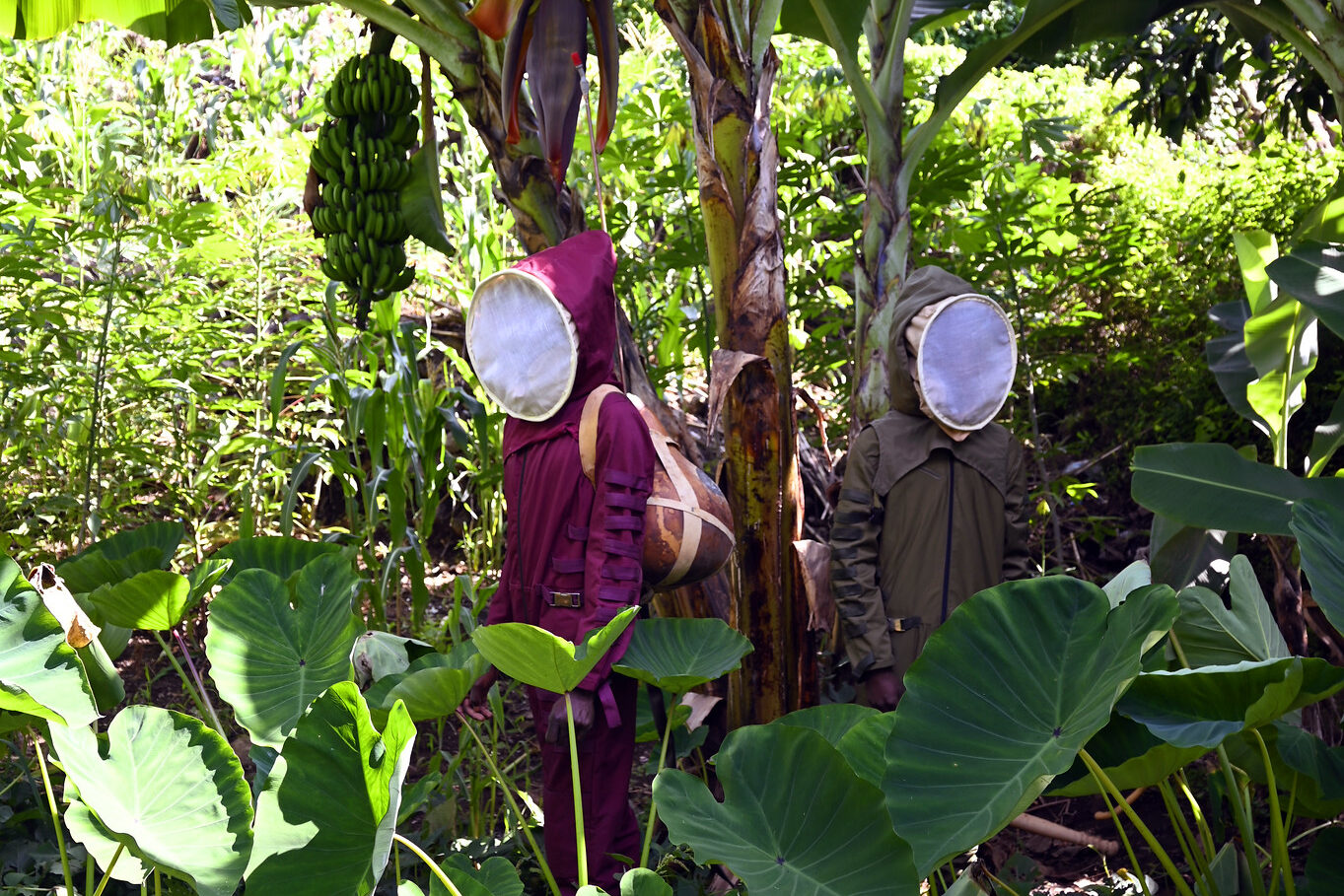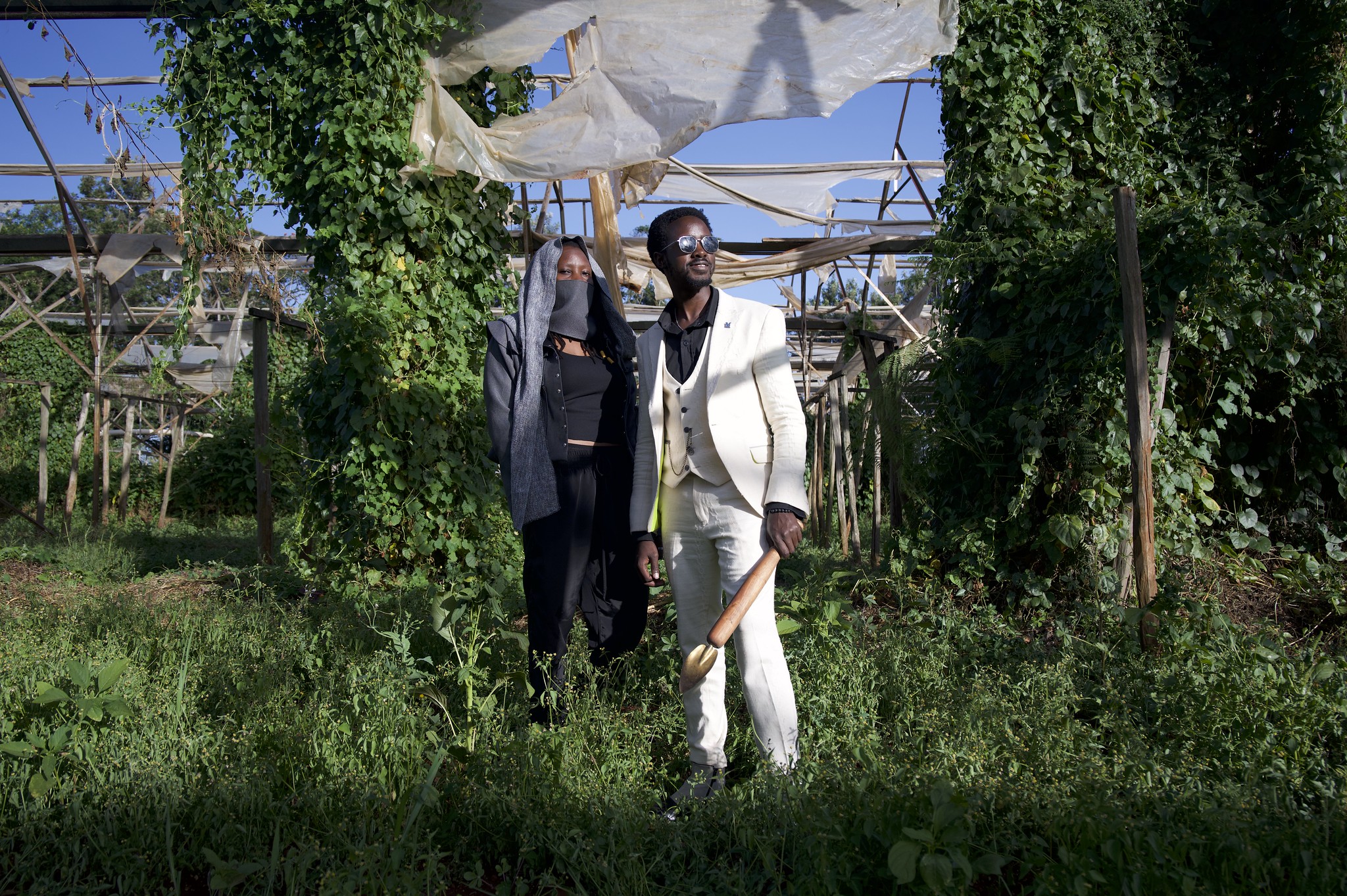What does a sustainable future in a big city look like? The Wild Future Lab in Nairobi showcases new paths for a renaturalized city through wearable, innovative artifacts made from local materials.
“Take a look around you. You are living on autopilot. We all are. There are so many opportunities that we’re missing because we think that great ideas are happening elsewhere, perhaps even on another planet.”
The S+T+ARTS Prize Africa, an initiative of the European Commission, recognizes pioneering projects in Africa that catalyze social change by blending science, technology, and art. The prize focuses on interdisciplinary approaches that combine digital innovation with practical solutions to ecological, economic, and social challenges. The prize recognizes initiatives that are shaping a diverse, inclusive, and sustainable future for the continent.
The Wild Future Lab envisions a renaturalized Nairobi by utilizing local materials and technologies. In collaboration with artists, designers, scientists, and technologists, the art and future research organization Kairos Futura has developed wearable artifacts—such as water-purifying backpacks, sunglasses with built-in pollution indicators, and solar-powered jackets. These objects serve as prototypes for a possible future where art, sustainability, and local production are inseparably linked.

Your project envisions a future based not on global technologies, but on locally available resources and skills. How did you develop this radically place-based approach?
Kairos Futura: We focused on local futures with the Wild Future Lab for two reasons. First, globalization and industrialization have homogenized culture, destroying a sense of place and local material innovation in many cities. Kairos Futura began in Lamu, Kenya—an island in northern Kenya that has preserved its cultural identity and local craftsmanship. This has created a rare and notable local aesthetic sensibility in today’s world of bulk-produced furniture, clothing, and design items. When we started Kairos, one of our main questions was, “Why is Lamu different?” Through this lens, imagining places based on local materials and indigenous designs became a central focus of our projects and programs, informing our explorations for the Wild Future Lab.
The second motivation for imagining locally produced and built solutions was that crafting local technology and finding local solutions is often more actionable than global, large-scale projects. Our goal is to empower a 23-year-old in a rural community to tackle an issue they want to solve.
“By highlighting local materials, indigenous solutions, and hackable tech people already have access to through their phones, we aim to inspire people to see possibilities, not obstacles, in achieving the future they want to create.”
The Wild Future Lab sees the future not as science fiction, but as something practical and tangible. How does this pragmatic approach influence your design choices?
Kairos Futura: We always start with fantasies and crazy ideas. What if? Could this be possible? But we also live in stark reality here in Kenya. Millions of people are still living in desperate financial situations. We see many design projects that create beautiful renderings or a 1/8-scale model, but then move on to the next project without attempting to design for the real world. For us, that doesn’t result in anything meaningful for the communities we work with. The hard work starts when an idea leaves the studio or lab and has to be made in real life. We call this reality testing.

In terms of design choices, we have fun with the fantasy part but build in a lot of time for the real-life implementation of our projects. We teach participants in our workshops and our team members that they will probably struggle and become frustrated when reality testing their ideas. Grit must be part of any meaningful project if we want to actually design for change.
You combine traditional techniques like hand weaving with digital tools like 3D printing or CNC machines. How does this combination of old and new change your perspective on materiality and innovation?
Kairos Futura: Local placemaking isn’t about the technology you use. Rather, it’s about designing for the surrounding ecology — the landscape, the people, and the opportunities and challenges of the area. For instance, Nairobi experiences heavy rainfall at times and extreme dryness at others. If a mud house with a thatched roof is the most sustainable and comfortable type of locally produced home, then we believe that’s the type of home that should be built to align with the landscape. Could that house benefit from a CNC-cut water catchment system? Could we store the water underground and pump it using a solar pump made from 3D-printed, open-source parts?
When a 3D-printed solar pump part breaks, there’s no need to wait for a replacement part to arrive from China or for a special technician to visit. There was a time not long ago when almost all technology with foreign-made parts was very problematic because it couldn’t be repaired when it broke. Now, all of that is changing amazingly quickly. Someone can find plans for a tool online and fabricate the entire thing here in Kenya. When a part breaks, they know where to go to reprint or cut a new one.
“An incredible revolution of locally produced equipment is happening across Africa. This development isn’t at odds with local craftsmanship; it’s a new form of it.”
All locally produced items, whether technological or traditional, have the same benefit. They support a local economy in touch with local realities, and they can be easily repaired when broken because the maker is part of the community.
What can a city like Nairobi – with its specific resources and challenges – teach other urban spaces about sustainable production methods and lifestyles?
Kairos Futura: Nairobi has an incredible system of emerging fabricators and designers who innovate on the go and receive real-life feedback faster than most people in Europe or the US could ever imagine. We can go from sketching an idea to selling the product on the street in four weeks. This is possible for a very interesting reason. Unlike in most of Europe and the US, mass industrialization and factory jobs haven’t destroyed all local artisanal jobs here because we still have thousands of skilled craftspeople. Nairobi is home to hundreds of shoemakers, thousands of metal workers, basket weavers, rug makers, carpenters, and furniture makers. These are people with hands-on skills who have become a rarity in many places in the world. If we want to build a truly sustainable, locally imagined future, we need to bring back these types of jobs. Mass-produced objects are a 20th-century production nightmare that will continue to damage the planet and encourage extractivism until our relationship to craft changes.

This culture of craft has also made inventive upcycling possible here. Industrial and local-scale upcycling are the norm in Kenya. Unlike in much of Europe and the US, upcycling isn’t a niche culture for craft enthusiasts. Entire industries employing millions of people exist around upcycling, including those involving pallets, electronics, and secondhand clothes. These items aren’t melted or pulped for reuse. They’re incorporated into new objects in their existing form. A large percentage of the furniture in Nairobi is made from pallet wood. Many phones are rebuilt from parts salvaged from trash. Almost everyone in Nairobi wears more secondhand than new clothing. If the rest of the world consumed goods the way most Nairobians do, their carbon footprint would be much smaller.
Your wearable artifacts are more than clothes – they are visions of an alternative everyday life. What do you want people to take away when they see or wear these designs?
Kairos Futura: Take a look around you. You are living on autopilot. We all are. There are so many opportunities that we’re missing because we think that great ideas are happening elsewhere, perhaps even on another planet. We started Kairos Futura partly because we found the space fantasy narrative so troubling. We’ve been sold on the idea that we’re all going to get on a spaceship and live at a space colony on Mars, where Elon Musk controls the water and air supply. What about a beautiful future for our communities? Where is that vision? What would it look like? When you focus on local futuring, you can make your fantasies into something real and solve your challenges with what you already have, not what you wish you had.
The Wild Future Lab project will be presented at the Ars Electronica Festival in Linz from September 3 to 7, 2025. Visit the festival website for the latest project information and other program highlights.

Kairos Futura
Founded in 2021, Kairos Futura is an organization based in Kenya that focuses on art and futurology. It brings together artists, designers, scientists, and community organizers who use art to drive social change. Through exhibitions, workshops, and installations, Kairos Futura promotes creative dialogue about local challenges and inspires community-oriented visions of the future. Its projects include the Lamu Space Station, the Nairobi Space Station, Hakuna Utopia?, and the Wild Future Lab. The organization awards grants, hosts open calls, and employs storytelling and local design as tools for change. Kairos Futura’s work has been featured in the BBC, Forbes, CNN, the New York Times, and other media outlets.